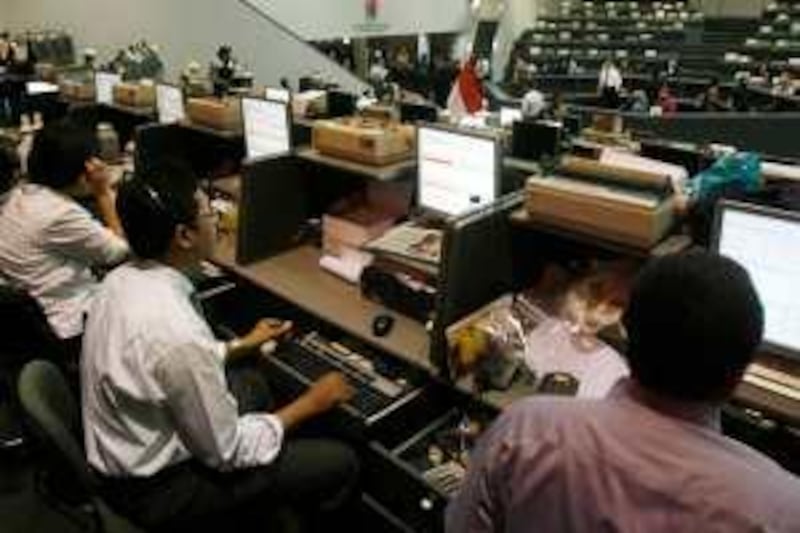BANGKOK // Emerging countries in East Asia are heading towards a V-shaped recovery but cannot rely on China alone to stimulate a regional rebound as risks remain, the Asian Development Bank (ADB) said yesterday. The bank said prospects of a return to growth levels seen in recent years also would not materialise until industrialised economies recovered enough "to rekindle demand for the region's exports".
"The risks to emerging East Asia's transition to recovery, while having dissipated somewhat over the past few months, remain firmly tilted on the downside," the bank, based in Manila, said in its Asia Economic Monitor released in Bangkok. "Emerging East Asia has entered the transition from recession to recovery, possibly V-shaped, with GDP growth sourced more from domestic stimulus than a resurgence in external demand," the ADB said. "But it is only a small V shape."
The region's exporters still depend on orders from the US, Europe and Japan, and trade in goods will "remain sluggish" until industrialised economies recover enough to rekindle demand, the ADB said. The economies, including China, South Korea and Indonesia, would probably grow faster than the 3 per cent estimated in March, before accelerating to 6 per cent next year, the report said, adding it would take time before the region's economies returned to their "full potential". Emerging East Asia is defined as the 10 Association of South East Asian Nations plus China, Hong Kong, Taiwan and South Korea.
Asian policy makers, who have slashed borrowing costs and pledged more than US$950 billion (Dh3.48 trillion) of stimulus plans, have started saying their economies may be past the worst of the global recession. Economists are raising estimates for the region's growth this year as China starts to recover and indicators show production declines may have bottomed. The report said China looked set for a quick recovery, with growth expected at 7 per cent this year and 8 per cent next year, providing a much needed boost to the region's economies.
"China alone cannot be the sole engine for the region's recovery as external demand is very weak; we need two engines," it said. The report said GDP in Japan was forecast to shrink 5.8 per cent this year, the largest contraction since 1955, due to a collapse in exports and weak domestic demand. It expected the US economy to shrink 3 per cent this year and the euro zone to contract 4.3 per cent. The report said there were some positive signs starting to come through that should offer support for a recovery late this year. Industrial production, retail sales, fixed-asset investment, business and consumer confidence are all showing that economic activity slowed less or began growing in the second quarter.
However, the ADB raised concerns about possible deflation across emerging East Asian countries. While it was too early to say deflation had emerged, it said, "continued depressed economic conditions, worsening labour markets and lower food and energy prices are expected to increase disinflationary [and possibly deflationary] pressures throughout the region in 2009". Inflation should remain under control next year, although if commodity prices rise quickly it could hurt the economic recovery.
The ADB said other risks to the region's recovery included the potential for the recession in advanced economies to linger longer, and the recovery could be weaker than expected. In the long term, East Asia must shift away from its dependence on exports to spur growth and instead bolster domestic demand. This required more development of financial sectors and further structural reforms. In countries where consumption was low, governments could boost spending on social safety nets, housing, education and health, indirectly raising disposable incomes, it said. "The authorities should plan rather than implement credible and coherent exit strategies to unwind the policy stimulus to prevent inflationary expectations from rising, which could later impede recovery and sustainable growth," the report said. The ADB said that, despite aggressive rate cuts, monetary conditions in the region had not been too expansionary considering the sharp contractions in the real economy, the benign inflation environment and moderating bank lending growth.
* with agencies





